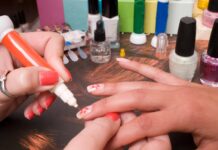Imagine walking into a nail salon, the soothing scent of nail polish and acetone filling the air, the sound of nail technicians chatting and the gentle hum of machines in the background. Have you ever wondered what wattage do nail salons use to power these machines and ensure a comfortable environment for both customers and employees? Understanding the electricity consumption of a nail salon can provide valuable insights into how these businesses operate and how they can improve their energy efficiency.
Nail salons typically use a variety of electrical devices and equipment to provide their services, such as nail drills, UV lamps for curing gel polish, and air filtration systems to reduce fumes and dust. These devices require different levels of wattage to operate effectively, depending on their size and power requirements.
One of the most common devices used in nail salons is the nail drill, which is used for shaping and filing nails. Nail drills typically consume anywhere from 20 to 60 watts of power, depending on the model and speed settings. UV lamps, used for curing gel polish, can consume around 36 watts per nail lamp. Air filtration systems, which are essential for maintaining air quality in the salon, can consume anywhere from 100 to 300 watts depending on the size and capacity of the system.
To ensure that a nail salon is operating efficiently and minimizing its electricity consumption, there are several practical tips that salon owners can follow. Investing in energy-efficient devices and equipment, such as LED nail lamps or low-power nail drills, can help reduce energy usage and lower electricity bills. Additionally, implementing smart energy management practices, such as turning off unused equipment and optimizing heating and cooling systems, can further improve energy efficiency.
When comparing different devices and equipment used in nail salons, it’s important to consider the pros and cons of each option. For example, while UV lamps are effective for curing gel polish quickly, they can also consume a significant amount of power. LED nail lamps, on the other hand, use less energy and have a longer lifespan, making them a more sustainable choice for salon owners.
In conclusion, understanding the wattage requirements of devices and equipment used in nail salons is essential for salon owners to optimize their energy consumption and lower operating costs. By investing in energy-efficient equipment and implementing smart energy management practices, nail salons can not only reduce their environmental impact but also create a more comfortable and sustainable environment for both customers and employees. So next time you visit a nail salon, take note of the wattage used and consider how you can contribute to a more energy-efficient future.












